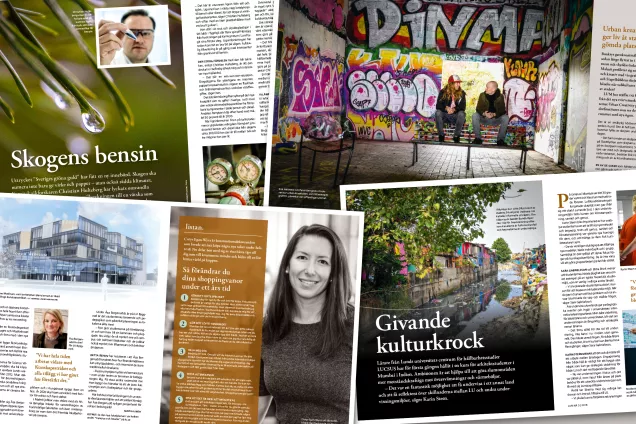“Biohackers share their ethics with computer hackers. Instead of computers, they try to ‘hack’ the human body and crack the code for how it is ‘programmed’. All methods and results are shared online; everyone has the right to more knowledge about the human body. According to the movement’s advocates, it is a democracy movement”, said Moa Goysdotter, a cultural sciences expert specialising in digital cultures.
In the US, biohacking has been an established popular movement for the past ten years. When American biohackers organise major events, companies are also invited to pick up ideas which they can then develop into new products. 23andMe is an example of a company which arose from biohacking. They sell genetic testing to private individuals who want to map their DNA.
Martina Johansson is a biohacker and bioengineer. She describes most biohackers as curious private individuals who attempt to hack something from time to time, for example to find a way of getting better sleep. But some biohackers are biologists and chemists with their own lab in the garage, who more methodically test what governs bodily functions. Others are programmers or engineers who produce their own chips or apps in order to monitor their own bodily functions.
“Biohacking means no longer seeing oneself as a victim of one’s genes, of destiny or circumstances, but taking everything into one’s own hands. They don’t hesitate to conduct dramatic experiments on their own body or brain. A biohacker often goes against accepted health advice, does not listen to anyone and is sceptical of doctors, dentists and psychologists”, said Martina Johansson, a biohacker now based in Shanghai. She has recently published a book on the functions of bacterial flora in the intestinal tract and the nervous system of the stomach.
When Moa Goysdotter started to investigate biohacking in 2013, she had to travel to Copenhagen to find an active group. But now the BioNyfiken (“BioCurious”) network has emerged in Sweden, with divisions in Stockholm, Gothenburg and Malmö. Membership is growing fast, increasing by 2–3 people per day. Recently, a transplant party was held in Malmö, where a small group chose to "get chipped", i.e. to have a chip surgically inserted in their hand, programmed for example with door codes and their ICA card data. The idea is to be able to open doors simply by extending your hand. Humans and technology are merging; the body is upgraded with new capacities.
“There are enormous databases of biological data which are accessible to everyone. Some people see biohacking as a new form of science and believe that we will more rapidly find answers which can lead to new treatment methods and drugs if many people do ‘research’ and help each other”, said Jenny Grönberg-Hernàndez, PhD in immunology, who has been part of the project since 2014.
Biohacking is also about producing accessible, cheap equipment which can replace the expensive labs of the researchers. Genetic engineering is now so cheap and accessible that there are private individuals who have DNA experimentation as a hobby. On YouTube, one fellow demonstrates how to build your own laboratory equipment to extract DNA. It is made of wood, involves a salad spinner and appears to work.
“When we ask biologists what they think of biohacking, the most common reaction is that it sounds like a game. But how will bioscience deal with biohacking if it becomes a force to be reckoned with? That is what I want to monitor”, said Moa Goysdotter.
Text: Jenny Loftrup
Photo: Gunnar Menander
The world’s most famous biohacker
Name: Jack Andraka
Why? Because at the age of 15 he developed a test for detecting pancreatic cancer at an earlier stage.
How? He used a scholarly article on nanotubes, Wikipedia, a biology lecture on antibodies and an enormous will to find the solution, after a close relative died of pancreatic cancer.
Sources: Wikipedia and YouTube



